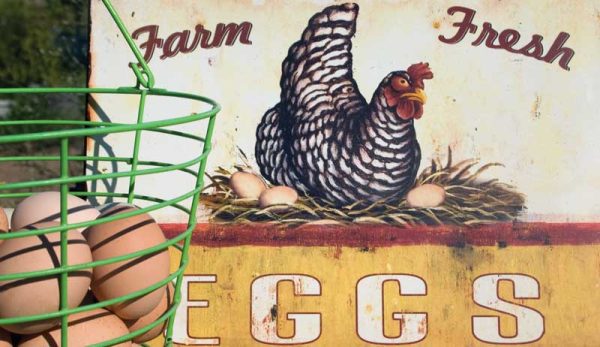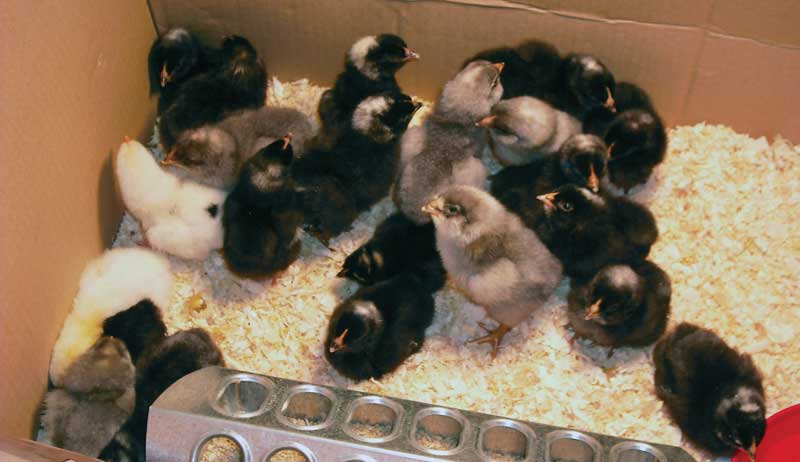
As “refugees” from the hustle, bustle and often chaos of urban living, my wife and I retired to a rural setting. We purchased some raw acreage and began the process of developing it with a house and a couple of outbuildings for storage and shop facilities. We attempted to be as self-reliant as possible. Having had little previous experience in rural living, we have spent years living on a “learn-as-you-go” basis in adapting to our new lifestyle.
With the advent of our first spring, we considered livestock and settled on raising chickens for eggs and meat, buying 15 chicks at the local feed-supply store. We took home 13 hens and two roosters.
While the chicks were housed in temporary brooder facilities, we quickly constructed a coop and an outside run for that size of a flock. Once matured, the hens laid anywhere from six to a full dozen eggs a day in the first year, depending on their moods, the weather and the season. The roosters fought and played Casanova to the hens throughout the year. One became dominant and the other so intimidated that he wouldn’t go outside without being chased back into the coop.
Let’s Try Incubation
After a year of working with our original flock, and because our hens hadn’t gone broody, during the first week of the following April a co-worker loaned us a tabletop device for incubation. We planned to try our hand at hatching eggs because it became apparent early on the idea of motherhood seemed completely foreign to our existing girls.
Egg laying became a daily drop-and-walk-away event in the coop’s nests.
Not knowing what we were doing, we hit the books, reading up on egg incubation. We learned it would take approximately 21 days to hatch and that the temperature needed to be maintained continuously at 99 degrees with a 10-minute cooling period twice a day. Also, we had to make sure the incubation humidity whould be a constant 75 percent, meaning adding water to a trough in the incubator at least once a day.

We also calculated that a percentage of the eggs wouldn’t hatch, and some chicks wouldn’t survive the hatching process. Hatched chicks were to be kept in incubation conditions for 24 hours after hatching, and on and on.
With a possible 30 to 50 percent loss during the process and wanting to successfully hatch maybe 10 new chicks, we loaded the incubator with 23 eggs (about three days of laying). Then, we began the process: checking the thermometer in the incubator every couple of hours, adjusting the heat control accordingly and filling the water trough when needed to keep incubation conditions right.
All the while, we wondered if we were just wasting our time and electricity.
Pay Attention to Murphy’s Law
Like clockwork, on the 21st day, we watched the first chick pip, then break, the shell and emerge, wet and pathetic. By 6 p.m., three had hatched and were drying and fluffing up. At 9:55 p.m., while other shells were beginning to crack, the power shut down!
(We had received a letter from our electric utility announcing power outages in our area for up to 12 hours for replacement of sub-station equipment but with no scheduled date.)
Power wasn’t re-established until 5:55 a.m. The outage lasted exactly 12 hours to the minute. When the lid of the incubator was opened, we expected the worst but were instead inundated with chirping and scurrying chicks: 18 eggs had hatched and more were cracking open.

By the end of it all, 22 of the original 23 eggs hatched successfully. Two other chicks subsequently died within a couple of days, which is commonplace, leaving us with an even 20 chicks to care for. As it turned out, we had an even split of 10 hens and 10 roosters.
Read more: Ready to try egg incubation? Here are some basics you should know.
Where Do We Go from Here?
Because a large cardboard box in the laundry room isn’t much of even a short-time solution to hold 20 chicks for very long, a 4-by-8-foot brooder (coop/pen) was built for the chicks, with plans to build a second one within days, as the first will become overly crowded within a couple of weeks.
With the first one finished and the chicks relocated, the construction of the second one started. A couple of hens from our original flock decided, within a week of each other, that motherhood was not such a bad idea, going broody and refusing to leave the nests in their coop. One was setting on 10 eggs while the second hen was setting on six more.
Trying to move them only caused them to growl and peck at one’s hands. (Yes, chickens can growl.)
Broody hens should be separated from the flock to hatch and raise their young until the chicks are big enough to protect themselves. Chickens don’t have the smarts to consider small chicks anything but a meal, like the bugs that they scrape up from the ground! Adult chickens can appear to be aggressive to another’s young.
We adjusted our plans and priorities and constructed two broody hen pens (aka, maternity wards), one for each setting hen. This allowed them a peaceful place for their 21-day hypnotic trance and to raise their young until they were old enough to join the main flock and hold their own.
With the onset of heat of an early summer arriving at the same time, this meant a crash program in coop and brooder building in temperatures reaching into triple digit readings. The first brooder built was getting too small for 20 growing chicks, so once the maternity wards were finished, it was time to finish the second brooder pen.
The next step was to separate the hens from the roosters in the original incubator-hatched batch and build another henhouse and yard, complete with roosts and nests.
To keep fighting to a minimum, and to give the hens a break, a rooster coop and pen also had to be built before the boys discovered what their “mission in life” was. Upon completion of the hen-house and pen, the only thing left was to build a rooster house so that the roosters could be systematically cycled between the henhouse and their rooster quarters, giving all of the hens a break from their incessant mating activities.

And what did we do with the setting hens? Well, the first one hatched all 10 of her eggs, so there were 10 more chicks. The second one hatched three of the six eggs and abandoned the other three once her chicks were hatched. Of the 13 chicks that had hatched, the rooster population grew by five more.
Combined with the incubated chicks, we ended up with a total of 15 roosters and 18 hens.
Lessons Learned
Continuous cohabitation of roosters and hens in a single coop and pen was not the greatest idea, as we learned from raising the original flock. Roosters are aggressive when it comes to their favorite hens and have only one thing on their minds. They constantly fought and mated, tearing the feathers off the hens and literally running them ragged.
Because of the competition for the ladies, when more than a single rooster occupied the flock’s living quarters they tended to be extra aggressive, even to us and would turn on us at a drop of the hat.
What started out as an experiment in self-sufficiency as far as eggs and meat is concerned expanded proportionally. We went from one henhouse and pen to a couple of additional full-sized coops, a couple of brooder pens that doubled as emergency isolation facilities for sick or injured birds, and a full-time rooster house.
Beginning with a flock of 15 and ending the spring with a total flock of 48 meant that as the older birds aged beyond a productive life, others were readily available to take their place. Eggs were in abundance, allowing us to supply extended family members and sell off the excess at a local farmers market along with crops that we had begun growing.
The roosters and some of the hens were sold either as meat or as pets. Twice every year, a regular customer buys all of the roosters we put up for sale.
While it initially appeared as an overwhelming situation, things worked out to our benefit despite forcing us to expand more than we wanted to at the time. In subsequent years, we now have adequate facilities available to each success. We learned quickly to be realistic in what we wish for, making future hatching seasons more manageable and, though not entirely, more predictable.
In the following hatching season, incubation involved 25 eggs with a success rate of 23 hatched. However, the disproportional number of six hens and 17 roosters that resulted has made us rethink the idea of purchasing sexed chicks rather than facing the unknown of incubation of our flock’s eggs, which may make more economic sense.
This article originally appeared in the March/April 2023 issue of Chickens magazine.




